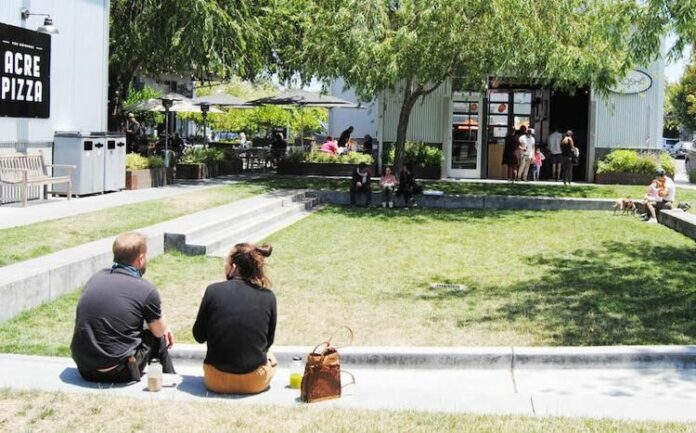The pre COVID-19 economy was very strong and can make a quick recovery in late 2021, economics professor predicts
The answer to when Sonoma County’s economy will begin a full recovery is simple, UCLA economist Dr. Jerry Nickelsburg told all the virtual attendees Thursday at the county’s annual economic forecast presentation. But the actual formula to an economic recovery action plan is a little more complicated.
“When the pandemic is stopped, the economy will begin to improve,” Nickelsburg said. “We need needles in arms to deflate our high unemployment and to rebound from this recession.”
The pandemic-caused economic collapse is different from all recent economic downturns which were caused by money, jobs and investment problems and not from a lethal coronavirus, he said. Prior to the pandemic-forced shutdown of business, government and social activities in early 2020, the county’s economy was a strong one with record low unemployment and moderate, but steady growth.
Sonoma County’s economy should improve sooner and faster than other parts of California and the nation, Nickelsburg predicted, but the scars from the pandemic will persist with some permanent job losses in hospitality and service sectors and with a wider gap in local income inequalities, especially among people of color.
The important local tourism industry might see modest, but welcomed improvement through 2021 as Bay Area and regional visitors return to wine country while still avoiding foreign and air flight travel, he said. Record housing sales, new construction and higher prices will be another growth area to the local economy, although housing affordability will worsen for working families and others, the economist also forecasted.
Nickelsburg’s set of data charts, financial ratings and various industry analysis did not differ from almost all other economic forecasts for the California and Sonoma County economy. In September 2020 economist Christopher Thornberg shared his annual forecast with the county’s Economic Development Board and participants where he called for a “V-shaped recovery” as soon as “we get the virus under control and keep wearing our damned masks.” Thornberg called the 2019 local economy as “bullet-proof as you might ever see,” except for the invasion of the single-cell pathogen that caused COVID-19 and has crippled almost all parts of the global economy.
This December, the county’s unemployment rate was 6.8% but it was 34% in the local hospitality, retail and people-services sectors. Nickelsburg endorse more rounds of federal paycheck, small business and household stimulus and predicted there would be “limited packages” coming soon from the U.S. Congress and Biden Administration. He said federal deficits will continue to rise while interest rates will remain at record lows all the way into year 2023 or beyond.
Asked if many local jobs and business activity might become permanent virtual and work-at-home functions, Nickelsburg said no. “I think very few of these jobs will stay in the virtual space. We see that productivity goes down and workers miss the social aspect of work.” He said the casual, unplanned and nonverbal interactions of workers is important to productivity and cultivating and passing on a business or organizational culture.
County supervisor chair Lynda Hopkins opened the online session Thursday morning, putting the call “needles in arms” her top priority as well.
“We need equitable vaccinations and we are literally working around the clock to make that happen,” she said. She lamented that so many locally owned businesses and jobs were still at high risk. “These are not just businesses and jobs that are on the line. These are business owners entire investment and their lives. They don’t only represent a part of our economy, but they are part of our local communities.”
A panel on the condition and challenges of the local childcare needs, institutions and services was led by Ananda Sweet, of the county’s Workforce Investment Board. She was joined by Angie Dillon-Shore, of First Five and Melanie Dodson, of the Community Child Care Council (4Cs.)
The panel outlined a picture of unmet childcare needs with an official waiting list 1,493 children, low-paid childcare workers, lost care facilities due to both the pandemic and recent wildfires and the economic challenge for parents to find as much as $13,000 to $19,000 to cover annual childcare costs.
“We don’t talk enough about this problem in economic terms,” said Sweet, “but it impacts all parts of the economy and leads to lost jobs” and poor learning and development conditions for under-served children, ages zero to five. “We are in desperate need for major federal subsidies or stimulus in this sector. And, it’s not just here; this is a national problem.”
Sheba Person-Whitely, executive director for the county’s Economic Development Board spoke to thank the event sponsors and encouraged participants and others to review Nickelsburg’s presentation at the EDB website.
41
F
Healdsburg
December 30, 2024








